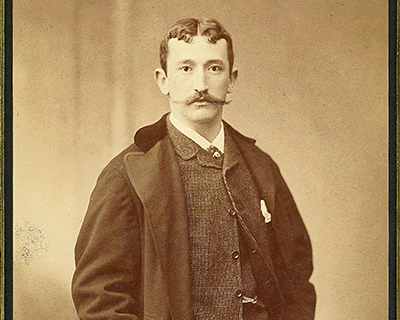Preserving History to Inform the Present

In 1884, Carl Koller, MD (1858-1944), had an epiphany: His friend Sigmund Freud’s “miracle drug,” cocaine, could be used as a local anesthetic. He later won many awards for this discovery. View Great Insights and Great Thinkers in Ophthalmology and other enlightening exhibitions at aao.org/exhibitions.
THE ACADEMY FOUNDATION proudly supports the Museum of Vision and its mission to honor the history of ophthalmology, the relevance of our profession and the progress of medicine and science. Through its unique collection of 38,000 artifacts, new exhibits and yearly symposium on more recent advancements, the museum keeps the connection alive between the past, present and future.
For example, during the Museum of Vision symposium at the Academy’s 2012 annual meeting, Hugh R. Taylor, MD, spoke about the modern history of onchocerciasis, or river blindness. Since the 1970s, governments of countries with a high incidence of onchocerciasis tried to control fly populations to reduce human infections with the parasites. This approach proved largely inadequate. But Dr. Taylor anticipated that a new class of drugs on the horizon would end the disease. His thoughts mirrored the thinking of the Nobel committee, which awarded the 2015 Nobel Prize in Physiology or Medicine to William C. Campbell, PhD, and Satoshi Omura, PhD, for their work in finding a therapy for the roundworm parasites that cause onchocerciasis.
PIVOTAL DISCOVERIES IN EYE CARE HISTORY
The 19th century brought significant disease and bacteriology advancements for modern medicine, together with the introduction of instrumentation, drugs and new practices. During this time, ophthalmology emerged as both a distinct medical and surgical discipline and a science. Several ophthalmologists who sought to better understand the human eye and improve the quality of vision helped bring about this transformation. The museum’s newest exhibit, Great Insights and Great Thinkers in Ophthalmology, highlights seven ophthalmic advancements and turning points in history. The exhibit debuted at AAO 2015 in Las Vegas. Visitors learned, among other breakthroughs, how eye injuries caused by airplane shrapnel in World War II led to the invention of the intraocular lens.